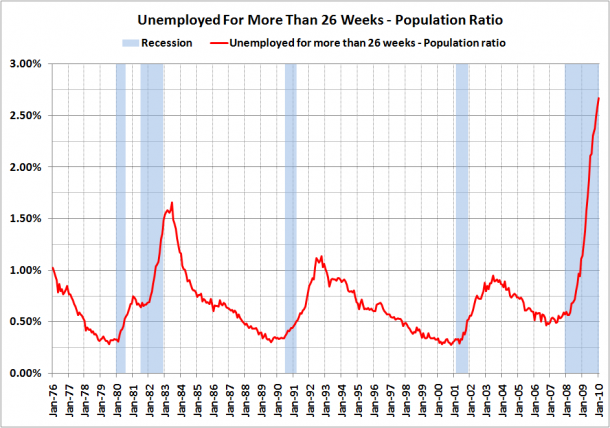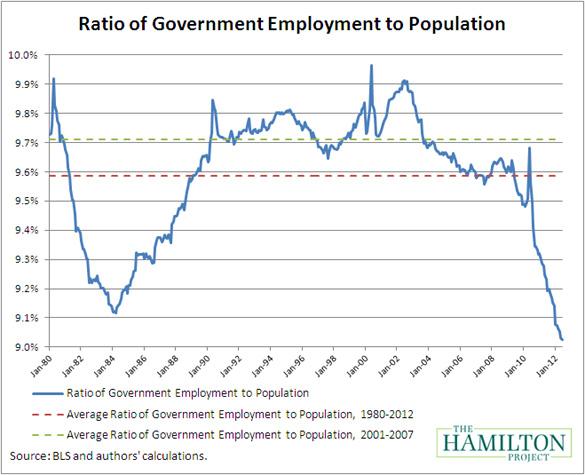Photo Credit: Shutterstock.com/ durantelallera
May 3, 2013
|
Oh, are we getting ripped off. And now we've got
the data
to prove it. From 2009 to 2011, the richest 8 million families (the top
7%) on average saw their wealth rise from $1.7 million to $2.5 million
each. Meanwhile the rest of us -- the bottom 93% (that's 111 million
families) -- suffered on average a decline of $6,000 each.
Do the
math and you'll discover that the top 7% gained a whopping $5.6 trillion
in net worth (assets minus liabilities) while the rest of lost $669
billion. Their wealth went up by 28% while ours went down by 4 percent.
It's as if the entire economic recovery is going into the pockets of the rich. And that's no accident. Here's why.
1. The bailouts went to Wall Street, not to Main Street.
The
federal government and Federal Reserve poured trillions of dollars into
Wall Street through a wide variety of financial maneuvers, many of
which were hidden from view until recently. When we add it all up, it's
clear that most of the money floated right into Wall Street. (Fannie and
Freddie were private institutions that also considered themselves part
of the Wall Street elite.)

2. Wall Street is Washington, Washington is Wall Street.
Those
who shuttle back and forth between Washington and Wall Street designed
the basic policies that both led to the crash and that responded to it.
Hank Paulson, Bush's Secretary of the Treasury, served as chairman of
Goldman Sachs before going to Washington. Timothy Geithner, Obama's
Secretary of the Treasury, headed the regional Federal Reserve Board in
New York (a board composed of Wall Street's Who's Who) before joining
the Obama cabinet.
Countless government officials and
congressional staffers can't wait to leave public service for lucrative
jobs on Wall Street. Their collective mindset is that the world can't
function properly unless the richest of the rich get richer. Any and all
policies should therefore protect our biggest banks, rather than hinder
them. And, of course, both parties are in hot pursuit of Wall Street
campaign cash. Little wonder the so-called "recovery" transferred wealth
from us to them.
3. The Federal Reserve banks on trickledown.
The
Federal Reserve's ongoing stimulus policy comes down to this: The goal
is to reduce interest rates on bonds of all kinds so that money flows
into stocks. The more money that goes into the stock market, the higher
go the stocks. Rising stock prices leads to what economists call the
wealth effect -- those who see their stocks rise dramatically feel
richer and spend more. That's supposed to trickle down to the rest of
us: The rich spend more, businesses recover and then, maybe, hire more
people. It's working beautifully for the super-rich but obviously not
for the rest of us.
But wait, don't most of us own stocks either directly or through our pension funds and 401ks? Dream on, says this chart:
4. Washington fails to create enough jobs.
Wall
Street's gambling spree tore a gaping hole to our economy. In a matter
of months more than 8 million workers lost their jobs due to no fault of
their own. What these elite financiers did to us is unconscionable, and
they haven't had to pay a dime for the damage they caused. Although the
stimulus programs prevented the slide from deepening, it was far too
small to put America back to work. So now we're facing the highest
levels of sustained unemployment since the Great Depression. The biggest
victims of Wall Street greed are the long-term unemployed.

5. Government goes on a job-killing spree.
After
Wall Street crashed the economy, businesses failed, workers lost their
jobs and state and local tax revenues collapsed. In a just world, Wall
Street would have been taxed to make up the difference. Instead, public
employment was slashed. This further cut back on consumer demand,
reduced tax revenues and then created pressure for another round of
government job cuts. Of course, the Tea Party right loves the idea of
crushing government jobs and public employee unions as well. But the
main result is to increase unemployment, which in turn puts downward
pressure on wages and increases profits for the wealthy.
Occupation
|
Employment (2009)
|
Employment (2011)
|
Change in Employment
|
Percent Change in Employment
|
Teachers
|
3,942,700
|
3,721,938
|
-220,762
|
-5.6%
|
Policemen
|
666,579
|
610,427
|
-56,125
|
-8.4%
|
Fire fighters
|
233,051
|
277,158
|
44,107
|
18.9%
|
Emergency responders
|
69,370
|
39,170
|
-30,200
|
-43.5%
|
Air-traffic controllers
|
23,959
|
17,128
|
-6,831
|
-28.5%
|
Overall,
the combination of state, local and foolish federal cutbacks are
collapsing public employment like never before. And again, whenever
unemployment increases, it places downward pressure on the wages and
reduces the wealth of the many, while the few are enriched.

6. The big banks have become even bigger criminal conspiracies.
Not
only did we bail out too-big-to fail banks with public money and get
nothing back in return, but Washington allowed them to grow even bigger.
The biggest banks now have oligopoly power to rig prices. They also can
illegally collude in order to siphon off more wealth from the rest of
us. (For some juicy details, see Matt Taibbi's
"Everything is Rigged: The Biggest Price-Fixing Scandal Ever."
) The corruption and cheating are reaching epic proportions as they
gamble with insured deposit money, partner with loan sharks, money
launder for drug cartels, and foreclose on homeowners who are up-to-date
on their payments. All of that dirty money goes to the rich. (See
"Are Big Banks Organized Criminal Conspiracies?")

7. Hedge funds run wild.
In
2012, the top hedge fund manager "earned" in one hour as much as the
average family makes in 21 years. The top 10 hedge fund managers made as
much in one year as 196,000 registered nurses. What exactly do these
hedge fund honchos do? Much of it comes from what normal people call
cheating -- some of it legal, some of it borderline, and much of it
criminal. But they're hard to catch. They profit from illegal insider
tips, highfrequency trading, rumor-mongering, front-running trades,
special tax loopholes and even by creating financial products that are
designed to fail so that they can collect the insurance. They have their
hands in our pockets 24/7. (See
"America's New Math: 1 Wall Street Hour = 21 Years of Hard Work For the Rest of Us.")
8. The rise of the Ayn Rand Right.
The
Tea Party brought a new viciousness to the national dialogue. Not only
do they hate the government, but also, they hate the poor. Using the
twisted logic of Ayn Rand, they see the world divided into winners and
losers -- and screw the losers. Not only do they oppose social programs
like Social Security and Medicare, they also don't believe that
government should work on behalf of the collective good. In fact, they
see any and all collective efforts as an affront to personal liberty.
They want a world where the creators rule and the moochers suffer. They
would rather the rich rob us blind, than have the government try to stop
the financial cheating and deception. If Wall Street destroys your job
-- too bad. Go get another one and don't expect the government to help.
9. The silencing of Occupy Wall Street.
For
a few short months, the hundreds of Occupy Wall Street encampments
dramatically shifted the national debate. Wall Street was in the
crosshairs and "We are the 99 percent" spread into our consciousness.
It's still there, but Occupy Wall Street isn't...at least not in the
potent form that shook the rich and powerful. We don't have time here to
discuss whether it was silenced by repressive authorities, or if it
primarily caved in due to internal weaknesses in strategy and tactics.
But this much is certain: a mass movement to take on Wall Street makes a
difference.
***
The solutions are simple, but the fight is hard.
The Robin Hood Tax
The
best way to move money from Wall Street to Main street is through a
financial transaction tax -- a small charge on each and every sale of
stocks, bonds and derivatives of all kinds. Consider it a sin tax on
Wall Street's many vices. Such a tax could raise enough money so that
every student in this country could go to a two- or four-year public
college or university, tuition-free Just think what the elimination of
increasing student debt would do to the lopsided wealth statistics. Just
think of what that would do for jobs as colleges expanded to deal with
the demand. It's not a wild-eyed demand: 11 countries are about to adopt
such a tax. (See
robinhoodtax.org)
Public State Banks
A
second critical strategy to end Wall Street as we know it is to form 50
public state banks on the model of the Bank of North Dakota. These
would function as real banks rather than the rigged casinos that pass
for banks on Wall Street. State banks are designed to support community
banks that, in turn, lend to local businesses. Most importantly, the
public bankers would be paid reasonable salaries rather than gouging
themselves at the trough. (See
"Why is Socialism doing so darn well in Deep Red North Dakota?")
The
Public Banking Institute
is paving the way as its leaders (Ellen Brown and Marc Armstrong) help
some 20 states explore the idea. They need and deserve our support. And
for all you Fed haters, they also are formulating some very cool ideas
about how to dramatically transform our central bank. (More on that in a
future piece.) Most importantly, we all need to find a common way to
protest Wall Street's rule over the economy and over Washington. This
isn't about redistributing their wealth. It's about getting ours back.



This is my first time i visit here. I found so many interesting stuff in your blog especially its discussion. From the tons of comments on your articles, I guess I am not the only one having all the enjoyment here! keep up the good work Best No Fault Michigan Car Accident Law Firm in 2019
ReplyDelete